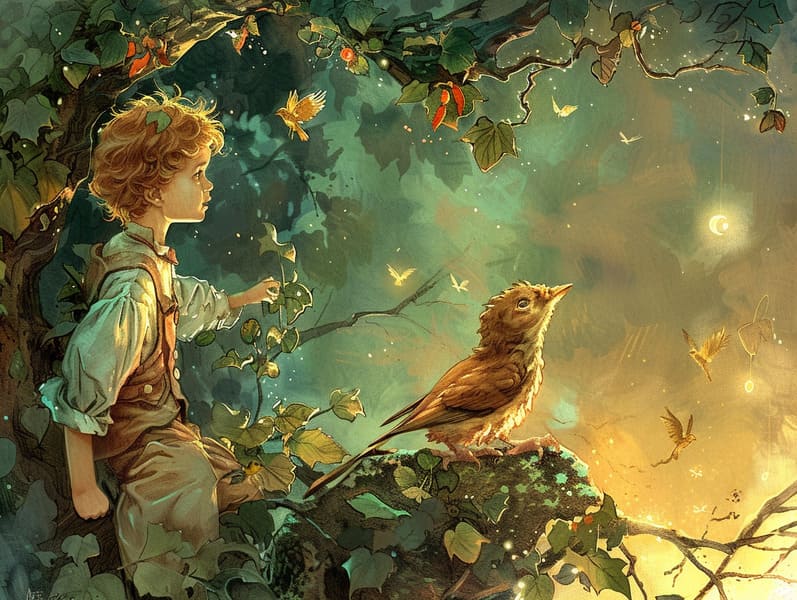The Beginning of Best Fairy Tales and the Consistent Spell.
The Beginning of Best Fairy Tales and the Consistent Spell.
Blog Article

Famous fairy tales have long histories. These stories have been passed down from one generation to the next ages before they were ever recorded. They emerged from a variety of traditions, including American traditions. They were initially passed along among grown-ups, often carrying themes and messages aligned with the societal norms and beliefs of the time.
The Grimm brothers, Jacob and Wilhelm (the Grimm brothers), were among the first to compile and release many of these beloved tales. Their anthology, "Grimm's Fables," included narratives like "Cinderella," "The Story of Hansel and Gretel," and "Snow White," which have since become cornerstones in the world of classic fairy tales. Similarly, Hans Christian Andersen's enchanting narratives, such as "The Sea Maid," and "The Little Duckling," have captivated hearts worldwide, guaranteeing their place in the pantheon of beloved fairy tales.
Despite their ancient origins, traditional fairy tales remain as impactful as ever, especially as nighttime stories for kids. These enchanting tales are now available in many formats, including colorful picture books, enchanting animations, and online storybooks.
Their enduring popularity can be traced to several charming aspects:
Crucial Morals: Timeless fairy tales often illustrate important moral lessons. Fairy tales like "The Tale of the Boy Who Cried Wolf" teach the value of integrity, while "The Story of the Tortoise and the Hare" stress the values of steadfastness and unpretentiousness. These tales offer kids clear distinctions between ethical and unethical, building their moral compass in a kind yet meaningful way.
Sympathy and Perception: Traditional fairy tales frequently feature individuals facing challenges and problems, encouraging young readers to identify with their struggles and root for their triumphs. For instance, "Beauty's Beast" emphasizes the necessity of appreciating inner worth to acknowledge the true nature of a character, promoting perception and perception.
Cultural Knowledge: Many timeless fairy tales are saturated in the cultural contexts from which they arose. Delving into these narratives can provide captivating looks into different traditions, nurturing a sense of global understanding and knowledge.
Imagination and Creativity: The extraordinary elements in fairy tales—enchanted objects—promote children’s visions and dreams. These fairy tales move readers to fantasy realms, stimulating inventive ideas and a sense of magic that continues a lifetime.
Old fairy tales are not only charming but also enlightening. They provide fascinating tools in building various brain and heart skills in the young. When traditional fairy tales are spoken, they promote speech development by presenting new terms and meanings and complex sentence structures. This practice also fosters listening abilities and attention, as children hang on every word, enthusiastic to see what happens next.
Furthermore, debating the themes and characters of traditional fairy tales can enhance thought processes and reasoning skills. Young ones are instructed to pinpoint patterns, anticipate outcomes, and know cause and effect. These contemplations also promote children articulate their thoughts and feelings, boosting their emotional intelligence.
In today’s high-tech era, the availability of free fairy tales online has made these stories more obtainable than ever. Web platforms and apps supply comprehensive collections of children's fairy tales that can be experienced or played anytime, anywhere. Fairy tales read aloud are particularly common, providing an check here engaging way for young readers to delight in these magical stories. Voice books and read-out-loud videos carry characters and settings to life, often accompanied by mesmerizing soundtracks and melodies that augment the story journey.
The timeless charm of timeless fairy tales lies in their ability to modify to the present while sustaining their essential themes. Contemporary takes of these narratives often bring in more inclusive characters and modern settings, making them accessible to today’s audience. However, the key lessons of courage, kindheartedness, and lawfulness remain unchanged, continuing to influence readers of all ages.
Old fairy tales also offer a sense of assurance and predictability. They showcase a neat narrative with a unmistakable beginning, middle, and end, often drawing to a close with the settlement of conflicts and the triumph of morality over wickedness. This dependability can be encouraging for kids, distributing a sense of dependability in an constantly changing world.
Traditional fairy tales continue to entrance and edify new generations, maintaining their captivation and impact in modern society. As children's night stories, they impart upon a perfect blend of allure and teaching, facilitating moral values, empathy, and creativity. The accessibility of digital storybooks and the well-received status of fairy tales told out loud validate that these classic narratives remain available to new generations.
By conserving and sharing these stories, we continue to extol the rich tapestry of legends and cultural heritage. Whether you are enjoying a colorful picture book, accessing a virtual library, or playing an narrated book, the attraction of children's fairy tales is always within reach. These fairy tales remind us of the unwavering presence of fairy tales and its ability to connect us across generations and cultures.
Be it you are reading a colorful picture book, experiencing a digital library, or listening on an audiobook, the loveliness of Grimm's fairy tales is always within reach.
These fairy tales reveal of the continued strength of storytelling and its ability to connect us across time and space, forging a link that captivates and teaches alike.